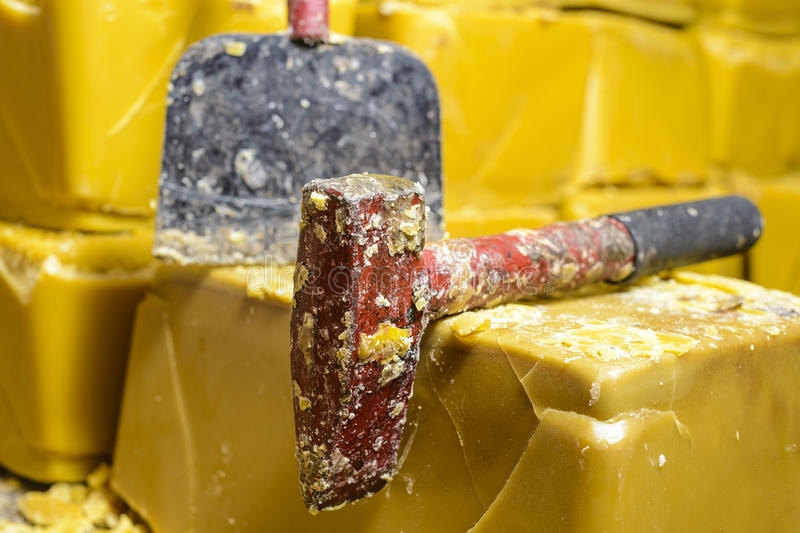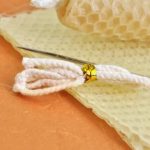Are you interested in creating your own homemade candles? Whether you are a beginner or an experienced candle maker, having the right accessories can make all the difference. From essential tools to decorative containers and unique customization options, there are a wide variety of accessories available for making candles.
When it comes to making candles, having the proper tools and equipment is crucial for ensuring successful and safe candle making. In this article, we will explore everything you need to know about the various accessories for candle making, including essential tools, types of wax and additives, fragrances, containers and molds, wicks and holders, safety measures, as well as creative and unique accessories for customizing your candles.
In the following sections, we will delve into each category of accessories in detail to provide you with a comprehensive guide on everything you need to know about making candles. Whether you are looking to learn about basic tools or want to discover creative ways to customize your candles, this article will cover all aspects of accessories for making candles. So let’s get started by exploring the essential tools that every candle maker should have in their toolkit.
Essential Tools for Candle Making
Candle making requires a variety of essential tools to ensure the process is both efficient and safe. From melting the wax to pouring it into molds, having the right tools can make all the difference in creating high-quality candles. Here are some of the essential tools for candle making:
Double Boiler or Melting Pot
A double boiler or melting pot is essential for melting candle wax. This tool allows for even heating and prevents scorching, which can affect the quality of your candles. Using a double boiler also reduces the risk of fire when working with flammable materials.
Thermometer
A thermometer is crucial for monitoring the temperature of the melted wax and ensuring it reaches the correct pouring temperature. Different types of waxes require specific pouring temperatures, and using a thermometer helps achieve the best results in candle making.
Heat Source
Whether using a stove, hot plate, or electric melter, a heat source is necessary for melting the wax. It’s important to choose a heat source that provides consistent and adjustable heat to avoid overheating or cooling of the wax during the candle making process.
Mixing Tools
Tools such as stirring sticks, whisks, or handheld mixers are essential for blending fragrance oils, dyes, and additives into the melted wax. Proper mixing ensures that these components are evenly distributed throughout the candle, resulting in a consistent scent and color.
Having these essential tools on-hand will streamline your candle making process and help you create beautiful, high-quality candles. Additionally, investing in high-quality accessories for making candles will contribute to both safety and success in your candle-making endeavors.
Types of Wax and Additives for Candle Making
When it comes to candle making, choosing the right wax and additives is crucial in creating high-quality candles. There are several types of wax available, each with its own unique qualities and benefits.
The most common types of wax used for candle making include paraffin wax, soy wax, beeswax, and coconut wax. Each type of wax has different melting points, fragrance retention, and burn times, so it is important to choose the right type of wax based on your specific candle making needs.
In addition to selecting the appropriate type of wax, adding certain additives can enhance the quality and performance of your candles. Some popular additives for candle making include stearic acid, vybar, and UV inhibitors. These additives can improve scent throw, color saturation, and overall burn quality of the candles. It is important to carefully research and understand how each additive works in order to achieve the desired results for your candles.
Furthermore, experimenting with different types of wax and additives can lead to unique and customizable candles. For example, blending paraffin wax with soy wax can create a longer burning candle with better scent throw. Adding vybar to your wax can help improve color vibrancy and reduce frosting on the surface of the candle. By understanding the properties of different waxes and additives, you can create customized candles that meet your specific preferences and needs.
Whether you are a beginner or an experienced chandler, understanding the different types of wax and additives for candle making is essential in producing high-quality candles. By exploring various options and experimenting with different combinations of waxes and additives, you can create unique candles tailored to your personal style or brand. Additionally, staying updated on new developments in candle making accessories can open up even more opportunities for creativity in crafting beautiful candles.
Choosing the Right Fragrances for Your Candles
When it comes to candle making, choosing the right fragrances is crucial in creating a product that will appeal to customers. The scent of a candle can evoke emotions and create ambiance, so it’s important to carefully consider the fragrances you use in your candles. There are various options available when it comes to choosing fragrances for your candles, and understanding the different types and options can help you make the best choices for your candle making business.
Types of Fragrances
There are several types of fragrances that can be used in candle making, including essential oils, fragrance oils, and synthetic scents. Essential oils are natural plant extracts that offer a wide range of scents, while fragrance oils are synthetic or natural compounds specifically designed for use in candles and other scented products. Synthetic scents are lab-created fragrances that mimic natural scents and can provide a wider variety of options for candle makers.
Considerations for Choosing Fragrances
When choosing fragrances for your candles, it’s important to consider the target market and preferences of your customers. Some popular fragrance categories include floral, fruity, herbal, and earthy scents. Additionally, you’ll want to consider the strength of the fragrance and how it will interact with the wax you’re using. It’s also important to ensure that the fragrances you choose are safe for use in candles and comply with industry regulations.
Customizing Your Scents
For those looking to create unique signature scents for their candles, blending different fragrances can result in custom combinations that make your candles stand out. Experimenting with different scent combinations can lead to discovering new favorite blends that set your products apart from others on the market. Additionally, offering customizable scent options allows customers to have a personalized experience when purchasing your candles.
Decorative Containers and Molds for Candle Making
When it comes to candle making, the containers and molds you choose can play a significant role in the overall look and feel of your finished product. Not only do these accessories dictate the shape and size of your candles, but they also add a decorative touch to your creations. Here are some essential containers and molds for candle making:
- Glass Jars: These versatile containers are perfect for creating classic candles. They come in various sizes, shapes, and designs, allowing you to customize your candles according to your preference.
- Tin Containers: Tin containers are not only stylish but also travel-friendly, making them ideal for creating portable and durable candles. They are available in different colors and finishes, adding a modern twist to your candle designs.
- Silicone Molds: If you’re interested in making unique or novelty-shaped candles, silicone molds are a must-have accessory. From geometric patterns to fun figurines, these molds allow you to unleash your creativity and experiment with different candle designs.
In addition to choosing the right containers and molds for your candles, it’s important to consider the materials they are made from. Ensure that the containers or molds you use are heat-resistant and suitable for candle making to avoid any safety hazards or damage during the pouring and cooling process.
Ultimately, decorative containers and molds are not just practical accessories for making candles; they also offer endless opportunities for creativity and personalization. Whether you prefer classic glass jars, trendy tin containers, or unique silicone molds, selecting the right accessories can elevate your candle-making experience and result in stunning, customized creations.
Wicks and Wick Holders for Different Types of Candles
When it comes to making candles, choosing the right wicks and wick holders is essential for creating the perfect burn. Different types of candles require different wicks in order to ensure an even and consistent burn. Here are some essential wicks and wick holders to consider for different types of candles:
- Cotton Wicks: These are the most common type of wicks used in candle making. They come in various sizes and are suitable for most types of wax.
- Wooden Wicks: Wooden wicks create a unique aesthetic and soothing crackling sound when burning. They are ideal for soy or beeswax candles.
- Zinc Core Wicks: These wicks are designed specifically for paraffin wax candles and ensure a steady burn with minimal mushrooming.
In addition to choosing the right wick, it’s important to also consider the appropriate wick holders for different types of candles. Wick holders keep the wick centered as the candle cools and solidifies, ensuring a straight and even burn. Here are some common types of wick holders:
- Circular Wick Holders: These are suitable for most container candles and help keep the wick centered while the wax sets.
- Pin Style Wick Holders: Ideal for pillar or taper candles, these holders use pins to keep the wick in place at the top of the candle as it hardens.
- Clips or Sustainers: These metal devices are crimped onto the bottom of the wick, keeping it upright while the wax sets around it.
By selecting the appropriate combination of wicks and holders, you can ensure that your candles burn evenly and efficiently, providing a wonderful sensory experience for anyone who enjoys them. With these essential tools at hand, you can create beautiful candles that not only look stunning but also fill your space with delightful fragrances.
Safety Equipment and Measures for Candle Making
When it comes to candle making, safety should always be the top priority. There are several essential safety equipment and measures that every candle maker should have in place to ensure a safe and enjoyable crafting experience.
First and foremost, it is crucial to have a fire extinguisher and smoke detector readily available in the candle making area. In the event of an accidental fire, having these tools can help prevent a small incident from turning into a disaster. Additionally, it’s important to work on a heat-resistant surface and have a first aid kit on hand in case of minor burns or injuries.
Another important safety measure is to never leave melting wax unattended. It’s easy for wax to reach its flashpoint, especially when heated, so it’s essential to keep an eye on it at all times. Additionally, wearing appropriate protective gear such as gloves and goggles can help protect against potential burns and splashes from hot wax.
Overall, the key to practicing safe candle making is being prepared and proactive about potential hazards. By having the necessary safety equipment in place and following proper safety measures, candle makers can enjoy their craft with peace of mind.
| Safety Equipment | Measures for Safety |
|---|---|
| Fire Extinguisher | Never leave melting wax unattended |
| Smoke Detector | Work on heat-resistant surface |
| First Aid Kit | Wear protective gear such as gloves and goggles |
Creative and Unique Accessories for Customizing Your Candles
When it comes to making candles, there are plenty of creative and unique accessories that can help customize your creations. From adding special touches to creating one-of-a-kind designs, these accessories can take your candle making hobby to the next level.
One popular accessory for customizing candles is the use of decorative embeds. These can include dried flowers, herbs, glitter, or even small charms that can be placed within the wax as it sets. This adds a personal touch to each candle and makes them truly unique. Embeds can be easily found at craft stores or online, and they come in a variety of shapes and colors.
Another creative way to customize your candles is by using different types of dyes and pigments to color the wax. Whether you prefer vibrant, bold colors or more subtle pastels, there are plenty of options available. Liquid dyes and pigment powders are commonly used for coloring wax and can be mixed to create custom shades for your candles.
For those looking to add a bit of flair to their candles, consider using specialty molds that create unique shapes or patterns. There are endless possibilities when it comes to mold designs – from traditional round or square shapes to hearts, stars, animals, or even intricate geometrical designs. Using these molds allows you to create candles that are not only beautiful but also reflect your own personal style.
| Creative Accessory | Use |
|---|---|
| Decorative Embeds | Add a personal touch with dried flowers or charms |
| Dyes and Pigments | Create custom colors for your candles |
| Specialty Molds | Create unique shapes or patterns |
Conclusion and Tips for Choosing the Best Accessories for Making Candles
In conclusion, when it comes to making candles, having the right accessories is key to creating beautiful and high-quality products. From essential tools like melting pots and thermometers to decorative containers and molds, each accessory plays a crucial role in the candle-making process. It’s important to carefully consider the types of wax, additives, fragrances, and wicks you use, as well as any safety equipment needed to ensure a safe and successful candle-making experience.
When choosing accessories for making candles, it’s essential to consider the specific type of candles you want to create. Different types of candles require different tools and materials, so it’s important to do thorough research and invest in high-quality accessories that suit your needs. Additionally, getting creative with unique accessories can add a personalized touch to your candles, making them stand out from the rest.
Whether you’re a beginner or an experienced candle maker, having the right accessories is crucial for producing top-notch candles. By investing in high-quality tools, materials, and safety equipment, you can ensure that your candle-making experience is both enjoyable and successful. So take the time to explore the world of accessories for making candles and find the ones that work best for you. Happy candle making.
Frequently Asked Questions
What Supplies Do You Need to Make Your Own Candles?
To make your own candles, you will need supplies such as wax, wicks, fragrance oils or essential oils for scent, a double boiler or melting pot, a thermometer, a pouring pot, and containers to hold the finished candles.
What Does a Candle Maker Need?
A candle maker needs essential supplies like high-quality wax sourced from reputable suppliers. They also need wicks that are appropriate for the type of candle being made and fragrance oils or essential oils to create different scents for the candles.
What Equipment Is Used to Make Candles?
The equipment used to make candles includes a double boiler or melting pot to melt the wax evenly, a thermometer to monitor the temperature of the melted wax, a pouring pot to transfer the wax into containers, and molds or containers to shape the candles as they cool and solidify.
Additionally, tools like heat-resistant spatulas and containers for mixing fragrances are also important in candle making.

Welcome to my candle making blog! In this blog, I will be sharing my tips and tricks for making candles. I will also be sharing some of my favorite recipes.





